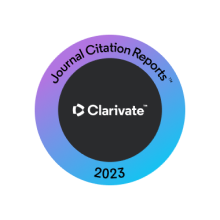Abstract
Objectives: This study aimed to determine the risk factors for the occurrence of arrhythmias after either transcatheter or surgical closure of atrial septal defect. Methods: This prospective study included 150 patients admitted for transcatheter or surgical closure of atrial septal defect. Transthoracic echocardiography together with a twelve-leads ECG were done during 1 and 3 months follow up. The paired T, chi-square and Logistic regression tests were used to detect any association between any arrhythmias and factors that may affect its occurrence. Results: One-hundred and twenty-three patients had percutaneous device closure while the remaining 27 patients had surgical closure. The youngest and oldest of the studied patients being 3 & 50 years old respectively with female (108) over male (42) predominance in incidence. After closure, 8 patients at one month and another 3 patients at three months follow up out of the total 150 patients had supraventricular arrhythmias in the form of frequent premature atrial contractions (6 patients), atrioventricular nodal re-entrant tachycardia (2 patients), and paroxysmal Atrial fibrillation (3 patients). No conduction abnormalities nor ventricular arrhythmias occurred. Multivariate analysis showed that age, P wave dispersion, systolic myocardial velocity of right ventricle, and systolic pulmonary artery pressure were independently associated with the occurrence of atrial arrhythmia after atrial septal defect repair. Conclusion: Age, P wave dispersion, Systolic pulmonary artery pressure, and systolic myocardial velocity of the right ventricle are independent risk factors to develop arrythmias in patients after atrial septal defect closure.
Recommended Citation
Mansour, Nouran Mostafa; Ghonimy El Sheikh, Raghda; Elsaeid, Ayman Mohamed; El-setiha, Mohammed El sayed; and Badr, Seham Fahmy
(2021)
"Factors determining occurrence of arrhythmias in patients post-closure of atrial septal defects,"
Journal of the Saudi Heart Association: Vol. 33
:
Iss.
3
, Article 2.
Available at: https://doi.org/10.37616/2212-5043.1260
Creative Commons License

This work is licensed under a Creative Commons Attribution-Noncommercial-No Derivative Works 4.0 License.




